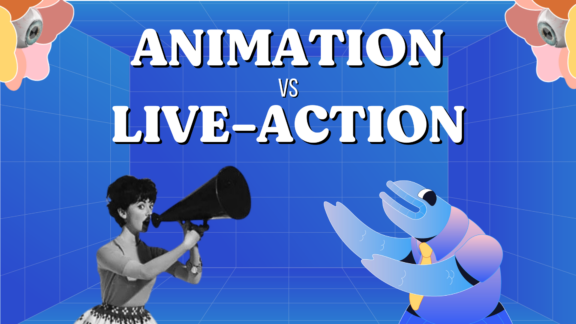- All
- 3D
- Animation
- AWS Activate
- B2B
- B2C
- Bit of Both
- Blog
- Cisco
- DB Culture
- Education
- Emmy® Award Winning
- Entertainment
- Explainer LP
- Featured
- Finance
- Fitness
- Healthcare
- HIMSS
- InBound19
- Live Action
- Live Action LP
- Manufacturing
- Marketing
- Motion Graphics LP
- Software + Tech
- The Drip
- Uncategorized
- Video Marketing
- What We Do Bit Of Both
- What We Do Live Action
8 Proven Video Marketing Best Practices To Elevate Your Business
July 5, 2018

From startups to enterprises, it’s hard for any company to underestimate the power of video marketing in 2018. According to Forbes, 90 percent of digital marketers are already using video in their marketing strategy. This means, yes, the time to start was…probably yesterday.
If you’re just getting started, don’t worry. Planning and creating video content can feel like an insurmountable task, but is manageable if you have the right strategy. To help, here are our 10 video marketing best practices to keep you on the right track.
Video Marketing Best Practices: Defining Your Strategy
1. Start with a goal
Before you write a script, create a YouTube channel and hit “record,” you absolutely must define your video marketing goals. Without a solid understanding of what your video marketing mission is, you’re doomed to waste money and make repeated mistakes. How do you define a video marketing goal? Simple: think about what, in an ideal world, your video would accomplish. Here are some common goals for companies investing in video marketing:- Increase leads or sales conversions
- Boost website traffic or engagement
- Keep customers on your website longer
- Build brand loyalty / awareness
2. Define your video’s target audience
You’re creating videos because you want to reach somebody, right? Well, who are they? If you can’t answer that question, chances are you’re not yet ready to take any next step in the video production process, whether you’re DIY-ing product videos in your backyard or working with an explainer video company. To define your target audience, ask yourself a series of questions about the ideal viewer of your videos:- How old is my target viewer? This question will help you identify how and where they consume video online.
- Where does my target viewer work? For B2B companies especially, this will help streamline the tone of your video content.
- Where does my target viewer live? This will also help define the video’s tone, as well as helping a great deal with paid video advertising along the road.
- What problem does my target viewer have? Chances are, your product or service solves a problem for your customer. This solution is commonly referred to as your “unique selling proposition.” Ask yourself, what are your target viewer’s pain points?
- How do we solve my target viewer’s problem? Having an answer to this question will help inform not only your video strategy, but the whole of your content marketing strategy as well. This problem/solution framework is at the core of most explainer videos, blogs, video tutorials — you get the idea.
3. Draw (yes, draw!) your sales funnel
We’ve spoken about the importance of sales funnels and video before, and at this stage of your video marketing strategy it’s essential that you understand how your company’s sales funnel works. How do you turn someone from a lead to a client? How do you close a sale? Most importantly: At what stage in your sales funnel are you struggling the most? If you’re bringing in plenty of leads, but they’re never setting up demos or calls, maybe the issue is in your email marketing. If your website traffic is up, but your form submissions are dismal, you likely need to re-evaluate your page content.Video Marketing Best Practices: Creating Dope Content
4. Create kick-ass videos
So far, our video marketing best practices have been largely ideological — and that’s great! It’s important to have a strong strategy in place before you waste your company’s time (and money) on bad content. Unfortunately, there’s one element of your video marketing strategy that can’t be defined by marketing jargon and worksheets. You can sit in rooms all day discussing your goals…but until that kick-ass video content is created, you won’t have much to show for your high ideals. Whether you’re creating video tutorials from your bedroom or investing in an explainer video, at the root of all engagement is the quality of the video itself. It should be awesome and it should tell a story. Easier said than done, right? We know, we know. Here are some of our best practices for creating great video content:5. Short or long? Use your strategy
Wait, we just said we were done with strategy…right? Not so fast. Your strategy should inform all of your video choices, especially ones regarding length, style and content itself. There are some demonstrable advantages to shorter video. For example, Vidyard recently found that videos less than 90 seconds in length see an average retention rate of 59%, while videos over 30 minutes that retain only 14% of viewers. However, if your target customer is on the web trying to learn how to build a website or understand code, chances are a 2-minute video isn’t going to do the job for them. This is why it’s essential that you refer back to your goal and your target viewer profile at every opportunity.6. Where it matters, keep it simple
Lengthy, wordy, complicated — do any of those words make you want to click “play”? If we’re not talking biopics, probably not. Particularly with explainer videos, the more simple you can make things, the better. Your product or service may have 1000 cool features, but trust us: your target viewer won’t sit tight long enough to hear them. No matter what kind of video you’re producing, always keep in mind that attention spans are short and YouTube’s library is long. You’re always competing with videos of cats doing cool tricks. Keep it simple and entertaining and your videos will perform a lot better.7. Call them to action
Have you noticed that every professional YouTuber asks you to do the same thing? “Like and subscribe,” they chant, their voices becoming more desperate by the day. In video marketing, your desperation should be the same. While in YouTube-land the currency is subscription counts and beating algorithms, your online video content is also practically useless without action. It can be as simple as “Head to our website” or as complex as “Click here to download your free whitepaper.” No matter what your CTA is, make sure it’s available to your viewer the second it appears. YouTube cards can be very helpful, as can video hosting systems like VidYard and Wistia.8. Don’t forget video SEO
If your videos are going to live on the internet, you shouldn’t forget to give them the same SEO love you would give to your blog posts or any page of your website. Your target customer profile will help you out here. Use it to define your YouTube keyword research strategy and title your videos the way you know your ideal audience would want to click on.Recap: 8 Proven Best Practices For Video Marketing
- Define your video marketing goals
- Understand your target audience
- Identify where video can strengthen your sales funnel
- Create kick-ass videos
- Use your strategy to define length, style and tone
- Keep your videos simple
- Always use a CTA
- Utilize video/YouTube SEO


